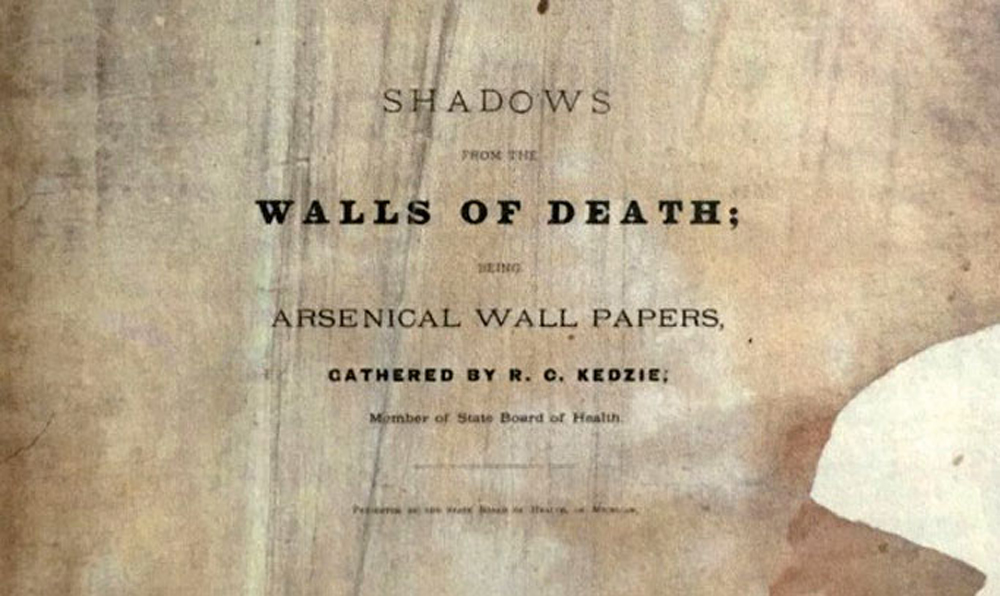
- Michigan, United States 1874. Robert C. Kedzie (1823-1902), professor of chemistry at the Michigan School of Agriculture and member of the Health Council, distributed 100 copies of Shadows from the walls of death in so many other libraries in that state in the United States.

On the first page, the title of the work, the name and position of the author, was the editor, and then a brief preface. In the next 86 pages there are no more words. And yet, “reading” the book could kill the reader. Literally.
Arsenic has been used by man since ancient times. Therefore, the pesticide (and homicide) properties of this chemical element have long been known. But in the 19th century it was used to dye fabrics, toys, postcards and other objects of green color. Also wallpaper.
At this time, Robert Kedzie studied the cases of several patients poisoned with arsenic. They did not seem to be based on these poisonings, but Kedzie noted that all the poisonous had a wallpaper in his house on the wall. In 1873 he published the Poisonous papers, with the aim of using arsenic as a pigment ohartarazteko.Ez. People thought that to poison it you had to lick or eat it. But time and humidity caused the toxic substance to be released and spread into the air.
A year later, he came up with an extreme way to raise awareness. Very carefully, he took wallpaper samples in the houses around him, shaped the page of the book and completed the 100 copies of the book to distribute them in the libraries of Michigan. He also distributed the report along with the book, and the awareness campaign began to produce results. Most libraries destroyed the book – there are only two left, guarded with strict security measures – and began to increase Kedzie’s concern. Gradually, arsenic was replaced by other substances in the production of murals that they liked so much in Victorian Europe and the United States.
By the end of the 19th century, the American Medical Association reported that 60 percent of wallpaper sold in the United States. United States contained arsenic, one third of them in quantities harmful to health.